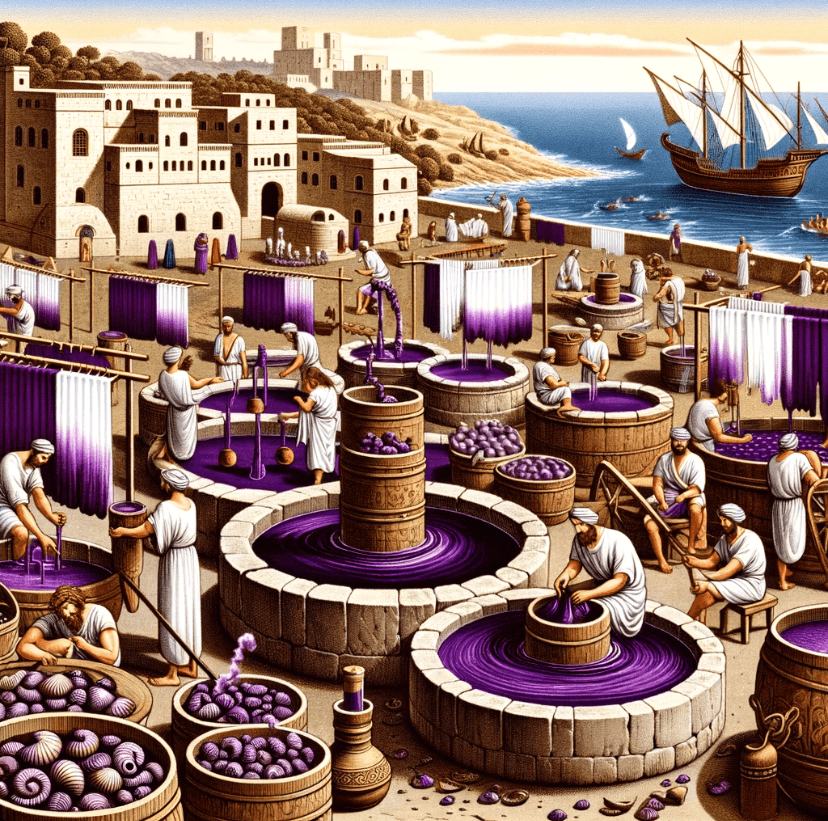Blog
Phoenicians: The Legend of Purple Fabrics That Enchanted the Ancient World

The Phoenicians were a civilization renowned in antiquity for their exceptional skills in navigation and trade. However, what truly made them legendary was their mastery in the production of purple fabrics. These fabrics, which still inspire admiration today, were highly valued in the ancient world not only for their aesthetic appeal but also for their symbolic and economic significance.
The Source of Purple Fabrics: The Murex Shellfish The purple fabrics of the Phoenicians were dyed using a special dye extracted from a shellfish known as Murex. The dye, obtained from species such as Murex trunculus, Purpura lapillus, and especially Murex brandaris, could create a range of colors from pink to violet. These shellfish lived in relatively deep waters and were caught using baited traps. The dye was extracted from thousands of shellfish left to decay in the sun, a labor-intensive process that underscored the dye's value.
Dibapha: Twice-Dyed Fabrics The highest quality purple fabrics were known as "Dibapha," meaning twice-dyed in the purple dye. These fabrics had a deeper and richer color, making them more valuable. Dibapha fabrics were especially favored by royal families and wealthy merchants. The Phoenicians not only produced these luxurious fabrics but also taught the dyeing process to other cultures. Similar shell deposits have been found in Phoenician colonies, indicating the spread of this knowledge.
Trade and Cultural Influence Phoenician purple fabrics were distributed through an extensive trade network across the Mediterranean. Egypt, Greece, Rome, and other ancient civilizations imported these valuable fabrics. The Phoenicians' monopoly on these fabrics strengthened their economic power. In major trade centers like Memphis, Phoenicians even had their own quarters, illustrating their influence in trade.
Symbolic and Social Significance In the ancient world, the color purple symbolized wealth, nobility, and power. Consequently, purple fabrics were often worn by kings, nobles, and religious leaders. Examples from literature, such as Paris gifting Helen a purple fabric in Homer's works, highlight their value. In Egyptian art, scenes depicting Phoenicians from Sidon also feature these fabrics.
Phoenician purple fabrics were an integral part of the ancient world, celebrated not only for their beauty but also for their cultural and economic impact. These fabrics showcase the Phoenicians' trading prowess, craftsmanship, and cultural influence. The production and trade of purple fabrics highlight the Phoenicians' dominance and legacy in the ancient world. Phoenician purple fabrics have remained a symbol of wealth and nobility throughout history.
